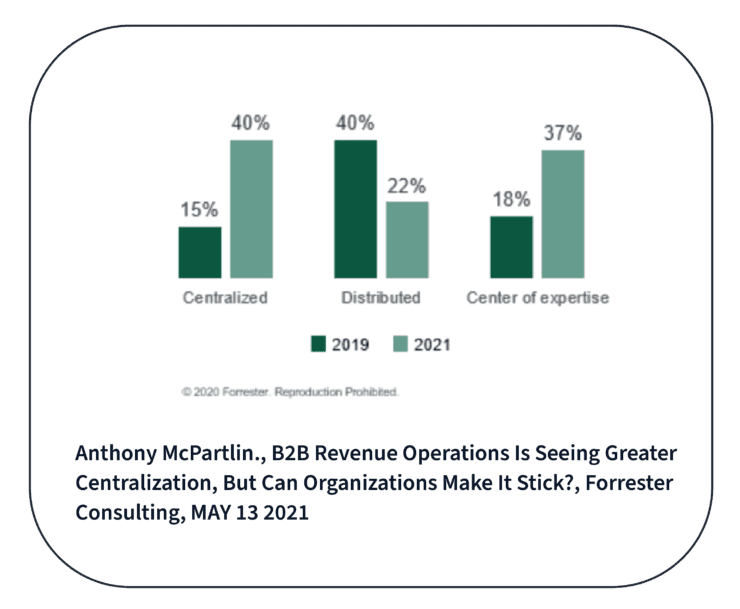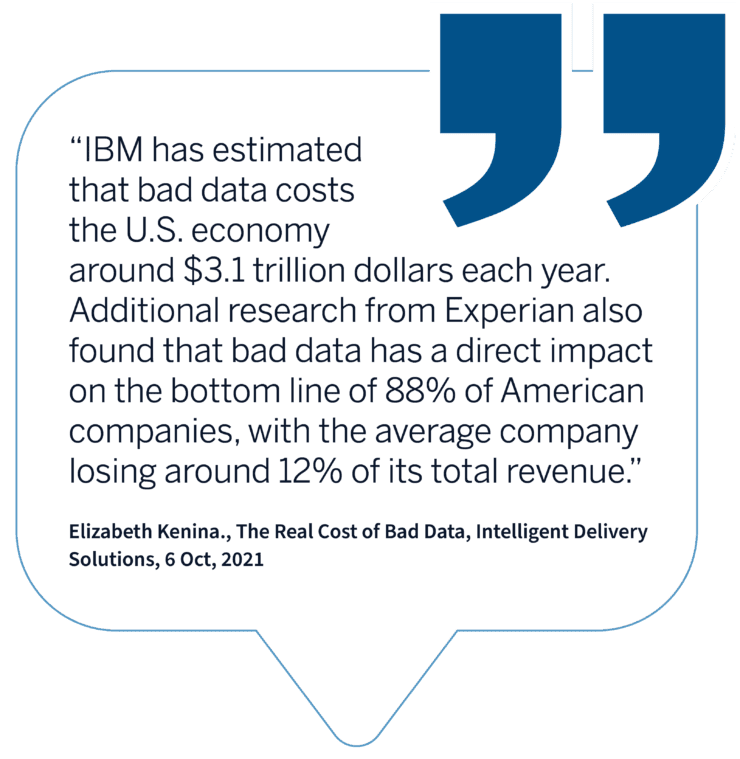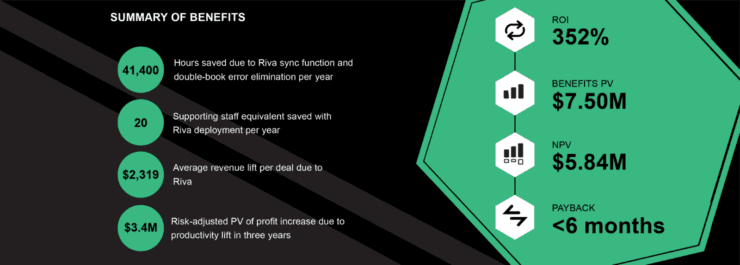The rapid acceleration of digital transformation has boosted customer insight to the top of technology and data operations priorities. To succeed, B2B organizations understand a more comprehensive view of prospects, customers’ relationships, and engagement activity is at the core of their continued success.
New customer journeys involve making sense of the expanding data, intelligence, and insight gathered across different buying processes and teams. Getting this “right” leads to great benefits including:
- a simplified and improved customer experience;
- data-empowered employees for improved decision making;
- Customer access to better optimized, aligned, and more relevant self-service resources; and,
- Improved future revenue predictability.
Is your company ready to handle the challenge of increasingly more complex and large influxes of data?
The Evolution of Revenue Operations

Many companies, especially enterprises, started their journey to improve customer journeys by implementing a new and better CRM solution. Most of those companies attempted to integrate the native email and calendaring connectors provided by the CRM vendors. Their expectation was the default integration options would bring together data from their revenue stack (Salesforce, CRM, or other centralized system of record) and the communications email and calendar stack used by customer-facing teams. Many companies discovered the hard way that the default solutions were not able to meet their revenue acceleration and operations integration needs or align their core teams to work better together. In its 2021 revenue operations survey, Forrester reported a significant change in the importance of Revenue Operations as early as 2019. This was based evidence of increased operations resource consolidation and the percentage of organizations centralizing revenue operations and making it a center of expertise/excellence doubling to more than 40% and 37% (respectively).
Revenue Acceleration versus Revenue Data Operations
What’s the difference between Revenue Acceleration and Revenue Data Operations? It’s often hard to tell because they both make the same promise – deliver revenue growth. Both are about bringing together marketing, sales, and customer service technologies and allowing for customer, opportunity, and deal data to flow seamlessly between them and promise to speed up and scale the revenue pipeline. Both value propositions includes improved seller productivity through automation, higher value engagement (by better understanding customer preferences), the ability to identify and coach successful seller behavior (activities, messaging), and better forecast accuracy. The difference between the two processes, however, lies in how they go about it.
First, let’s look at Revenue Acceleration. The main goal here is to align marketing, sales, and customer service functions using integrated data and shared insights. It starts with detecting and capturing activity signals from the data coming in and out of the organization’s systems and assigning them to the right contact, account, opportunity, or deal. Industry leaders then leverage this information and apply the best practices they’ve gathered from experience (and expertise) to create sales cadences that are meant to prompt customer-facing teams to do the right “next” thing. This helps team leaders and managers easily review activities logs, measure what’s working or not, and make appropriate changes. Some solutions even add AI or machine-learning capabilities for continuous improvement of the insights and actions brought forward.
The key question to ask is, “What’s the biggest and most important challenge and caveat companies discovered with Revenue Acceleration solutions?” The answer is “Data quality”!

How can customer-facing staff and automation systems be counted on to shape customer journeys by prompting the right next thing to do when you’re not sure the recommendations are based on good and accurate data – especially in the context of longer-term, complex high-value customer journeys? Most revenue acceleration solutions require you to “bring your own data” (BYOD). Their focus is to work on whatever data your current systems provides. Revenue acceleration solutions activate that data. They do not focus curating it or otherwise ensuring its quality, relevance, or accuracy. Their downfall is they do not acknowledge the importance of data trust. That’s where Revenue Data Operations shines.
The Critical Role of Revenue Data Operations
Revenue Data Operations strives to solve the critical role and importance of data trust issues – at the source. Think of your data platforms and processes as a house. By focusing on creating and using up-to-date, accurate data to build your flow and processes, your are ensuring the house you’re building lies on a strong, trusted foundation and is ready to withstand any planned or unforeseen events that come your way. This becomes especially important in the context of complex customer journeys. It’s easy to build sturdy, assembly-line, cookie-cutter houses following a copy, paste/build, and repeat strategy provided by the vendors’ default integration. And although houses based on that model will satisfy a large share of the basic needs in the market, houses build on default integration options won’t cut it for customers that require requirements that fall outside of the box! High-value and more sophisticated sales relationships that require cross-team selling and collaboration will only be able to be satisfied with a strategy that includes consideration of advanced design, architecture, performance, and security requirements. By focusing on the importance of the foundation – data, its value, and trustability – Revenue Data Operations helps ensure that all the pieces fit seamlessly together. This ensures the house is being built and later used – whatever the size or complexity – in the way that best reflects more sophisticated and higher value customer journeys.
Creating a Cohesive Data Ecosystem
Under the cover, Revenue Data Operations primary goal is to gather and provide the right data to the right people, in the right place, and in a timely manner. It goes further than Revenue Acceleration because it centralizes data management through a revenue operations person or team with a focus on ensuring the sales, marketing, and customer service/success departments can work together and benefit from the shared value of good data. Having team members who focus on data strategy and quality helps foster accountability and provides benefits across business units in many ways. Revenue Data Operations are the foundation on which data governance principles and processes can be built, and applied across the organization, and ensure they’re followed through. Being able to integrate the insights that are gathered and expertise gained allows an organization’s communications and revenue technology stacks to be properly aligned and drive long-term value.
Revenue Data Operations restores trust in data by leveraging automation and human intelligence where it makes the most sense – at the source. Let your systems do the heavy lifting of automating, classifying, and properly capturing data while it stores it, shares it, and surfaces it to the right people at the right time. Revenue Data Operations empower your customer-facing teams with the tools to want to quickly and easily make updates to customer information. People who benefit from Revenue Data Operations understand they will benefit directly by being able to access and access up-to-date information along the entire customer journey. This is how companies are able to create continuous customer intelligence gathering – and by extension, a smoother customer experience – both of which are essential to an organization’s long-term success.
Transformative Impact of Riva’s Revenue Data Operations
Riva is here to help. In a recent study commissioned by Riva, Forrester Consulting found that Riva’s ability to unify, govern, and distribute data to end-users resulted in valuable efficiency improvements and Return on Investment (ROI). The study shows Riva significantly reduces the time and resources necessary to accurately capture revenue and communications data—leading to marked improvements in the data quality necessary for managing complex customer journeys. Learn how Riva demonstrated a 352% ROI over three years —and how we can help your enterprise in its pursuit of nimble data monitoring, auditing, and governance.

Summary
Successful Revenue Data Operations integration is key to managing complex customer journeys successfully. They are also key to staying ahead of your competition. By focusing on data trust, centralizing data management, and leveraging automation and human intelligence, organizations can ensure accurate and timely data delivery. Implementing Riva as a core integration layer in your Revenue Data Operations improves decision-making, saves time, and fosters a brighter future. The TEI study highlights additional tangible benefits that organizations can achieve through improved Revenue Data Operations.
Latest Articles

